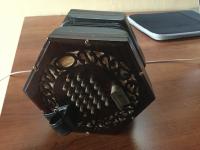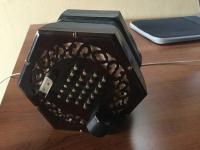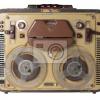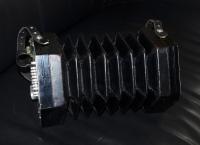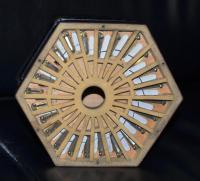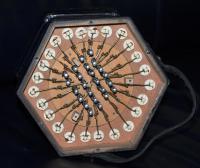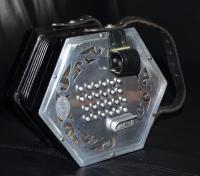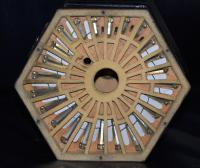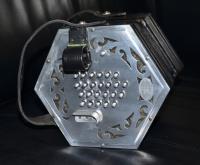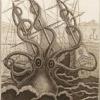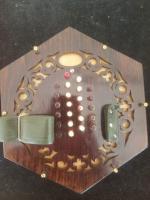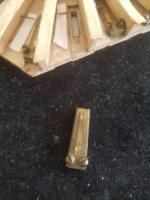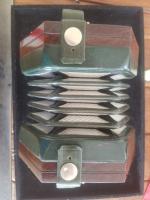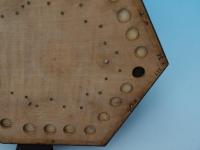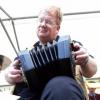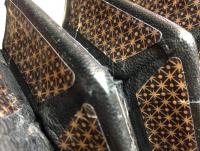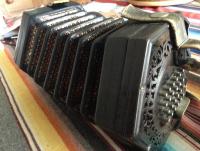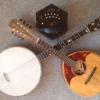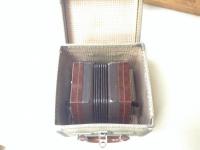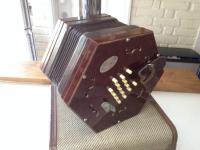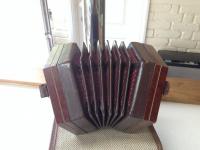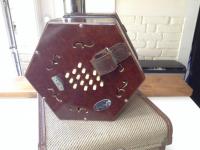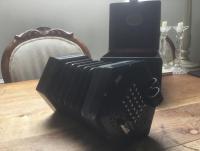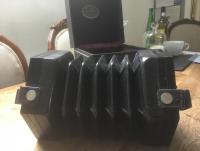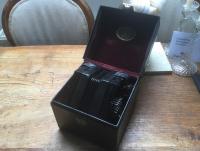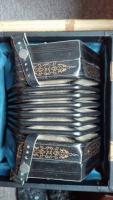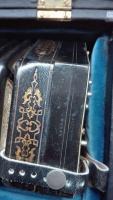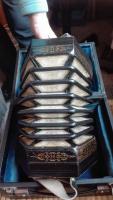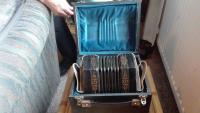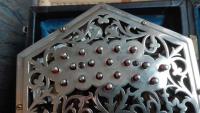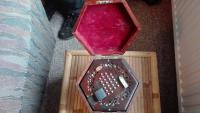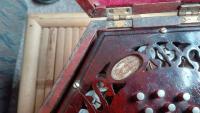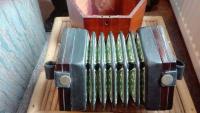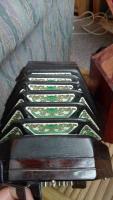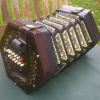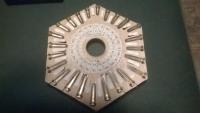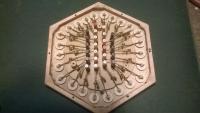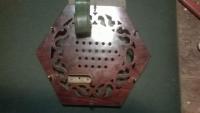Search the Community
Showing results for tags 'English'.
-
Wheatstone 1867 48-Key Treble English concertina #18261 Bought from The Buttonbox in 2017 with refurbished 5-fold bellows, new valves, tuned A=440, and new fitted hardshell case.
-
- Wheatstone
- English
-
(and 1 more)
Tagged with:
-
I'm new to this forum and to the concertina community and need some advice. A bit of background: I am a choral conductor and pianist. I'm the music director at a church in Dallas, Texas. I read music fluently and play by ear a bit but not am not gifted this way. In recent years I've discovered I enjoy a good stout in an Irish pub so have become curious about ITM (Irish Traditional Music) and that lead to doing some research on the concertina. I understand in broad terms the different key arrangements and the terms unisonoric/bisonoric of the English, Anglo and Duet systems. Here is my question: as a pianist and music reader will I make faster progress with which system? What do you think will be more intuitive and therefore I will be able to manage the learning curve in order to make music? I'm eager to hear your responses. McDouglas in Dallas
-
I plan to offer my Lachenal double acting bass for sale on e-bay in a few days. Unfortunately, this instrument has been mutilated by the attempt of a previous owner a long time ago to add some extra notes. I did have hopes of re-working it to original format but have finally concluded that the damage is too great to repair. It is short of quite a few lower note reeds and valve pads but the bellows are good and the main structure elements are useable. Accordingly, it is to be offered as spares rather than a restoration project and is mentioned on this forum to reach as wide an audience as possible for what is probably quite a rare instrument and consequent spares interest. Thanks for any interest.
-
Hello again everyone. I've been out of the loop for almost five years, so I guess that means I'm new here again, and those of you who've forgotten me can meet me for the first time a second time! I was able to go to the Old Pal event once back in 2012 with my Jackie, and since then I've been busy with a multitude of things. But enough about that. In regards to my Jackie, I find that the bellows are very stiff in comparison with other (vintage / higher price tiered) concertinas, and I was wondering if anyone had a suggestion or two about how I can get the bellows to limber up without causing undue wear on them. Also, occasionally the "low C" on the instrument has a buzz, like there's something stuck and vibrating between the valve and the air aperture, but I keep the instrument in the gig bag 99.5% of the time when I'm not actively practicing. Would I gain anything by opening up that side just to see if there's a speck of anything caught in the works? Lastly, I am finding myself in a situation where I will be needing to learn Anglo for occasional Celtic / ITM work. When going from English to Anglo, are there any keysets that lend themselves more to someone relearning the wheel? I figured that bisonorous bellows action would be the first stumbling block, as opposed to the unisonorous bellows action that I'm used to with the English. Thanks in advance for any insight that can be offered, and thank all you fine folks for still being around!
-
I'm just curious about what other English concertina players do when it comes to playing in keys where your fingers could choose one of the two same-sounding notes, like C# or Db, G# or Ab, etc.. I was playing something in the key of C# this morning, a simple tune, and if I was 'correct' and strict about what note to play, I had to consciously be careful to choose a d# (d sharp) when I encountered that note. What my fingers naturally wanted to play was actually the eb (e flat). At least in this case. I know it doesn't really make a difference, as far as how it sounds. And I'm guessing that if I were playing something very classical or complex, I'd probably find it more normal to play 'correctly.' But, with a simple tune, I find that my fingers just want to balance the distribution of buttons between my left and my right hand. Any thoughts on this?
-
I am selling my Treble Crabb English concertina, serial 18081, as i don't play it so often anymore. I bought it new around 1966 from H. Crabb himself. in those days he offered aluminum sides instead of the fancy cutted chrome ones at a slightly lower price, nevertheless the sound is still fabulous and tuning is fine. All reeds, leathers etc. are too, with no rust on reeds or mold and the instrument is not leaky, just as Mr Crabb told me then it would be for at least 20 years to come if i kept it away from moist, cleaned the bellow folds at times, and warm it up coming in from the cold especially, to avoid condense settling on the reeds etc. before playing. In the past i took it to gigs and used in theater circumstances, so it shows some signs of wear, but no damages apart from light scratches etc. I'm looking for a fair price offer, and then maybe a deal. PS the original case is present, in good condition, but has stickers on it. Location The Hague, Netherlands.
- 12 replies
-
Early English Concertina. Unnamed. Buttons: 48 Stained red/black and marked with note values on whites. Bellows: four-fold. Dark green with starburst papers. Bellows are sound. Serial number: 112 Reeds: brass in brass shoes with squared ends, stamped with note values. Valves cut square as per original. Condition: excellent internal and external condition. Fully restored on a historical basis by Andrew Norman in 2016. Plays at modern concert pitch. Sweet tone, not loud. Case: Victorian scientific instrument case with sliding top and handle. Name card of owner pasted in the top: Daniel Whitelaw, Glasgow. The name of the maker cannot be ascertained; but Andrew Norman thought is resembled work by William Dove. 1,700 pounds sterling. Estimated shipping to Europe, USA or Australia: 80 pounds.
-

Aeola And Model 5 - My "two For The Road"
Mike Pierceall posted a topic in Concertina Videos & Music
Back-to-back video of both models playing a popular tune. The Aeola is c 1909 with original 5-fold bellows and is in original old pitch. The Model 5 from 1918 has a new set of bellows I made and installed recently. It is in modern pitch. I restored both instruments over the past 12 months. The video is here:- 1 reply
-
- Comparison
- Jazz
-
(and 4 more)
Tagged with:
-
In the last year I explored a lot of Danish and North German tunes. Wonderful music that is working in the same style as English ceilidh music. So my project is: Learning every week a new of these English, Danish or North German tunes by heart. Here is the link for the first week played on my Chemnitzer: https://www.dropbox.com/s/zyuohlagww0h3ik/Trekant%20No15-%20Den%20gamle%20Mand.m4a?dl=0
- 8 replies
-
- Chemnitzer
- Duet
-
(and 3 more)
Tagged with:
-
A couple of months back I built a new bellows for an old Lachenal 48-button English concertina, and I think it came out rather well. I used the methods outline on the Homewood site, and my thanks goes out to Bob Tedrow for his excellent instructions. The bellows that were on my squeezebox were not originals, and they were functional but very ugly. Finding the papers was difficult, but the ones I got from Concertina Connection worked out fine. I'll attach a couple of pictures for your inspection. Ben
-
Has anyone noticed eBay item # 132025131856 ? (http://www.ebay.co.uk/itm/old-LACHENAL-CONCERTINA-ACCORDION-39-keys-English-Make-patent-No-4752/132025131856?_trksid=p2050601.c100607.m4280&_trkparms=aid%3D111001%26algo%3DREC.SEED%26ao%3D1%26asc%3D37140%26meid%3Dac9066a2bc99434fa44977d076f34489%26pid%3D100607%26rk%3D1%26rkt%3D4%26sd%3D322114455891) The seller says that there are buttons missing; but that doesn't seem to be correct. There are the same number of buttons as there are valves. But the buttons seem to have come from an older English concertina and have been arranged in random fashion (or latterly wrongly positioned) into a cut-down McCann. Anyone have any comments?
-
For sale simply because it's not being played and needs a new home. Paragon model, rosewood ends, metal keys, steel reeds; in excellent condition and well tuned at concert pitch. The very clean interior would suggest that this instrument has not had a lot of use since it was made, probably around 1914, but Lachenals are not straightforward to date. Tuned and re-valved by Andrew Norman. Comes with original rosewood box, but don't keep it in this as it holds the instrument the wrong way up! Therefore, also comes with a modern hard case. A sweet instrument - looking for £1100. Photos are available by e-mail but too large to post here!
-
I have a nice looking English system Mayfair concertina for sale or px for a G D melodeon , I brought this with an Anglo when I was starting my concertina journey ........ The Anglo won . As far as I can tell it's nicely in tune and all working . I believe it's from 1955. Asking £375 .
-
I was wondering if anyone could offer an in depth review of Alistair Anderson’s tutorial DVD? There’s been some discussion on these forums but I’ve only found one person who had actually watched it once and said they expected to learn a lot from it. I’ve just purchased my first EC, (Lachenal New Model). I’m a fiddle player with loads of Trad, New England Contra Tunes in my head. I don’t need a tutor for learning to read music, nor do I need a book of tunes. What I need is to figure out how to get the tunes out of the instrument! I’m becoming familiar with the fingerboard and can play jigs and reels although certainly not at tempo. I’m ready to start adding a few chords to waltzes and do understand chord construction so it will just be a matter of choosing my voice and learning to control multiple fingers at once. I’ve scoured these forums and picked up a lot of tips. I’ve downloaded the Butler and Anderson tutors. I’ve worked through the Butler book until the point where it focuses on keys that I never use. I’ve yet to work with the Anderson book but did buy the companion CD and look forward to using them together. I’ve watched all of Martyn’s videos. Would anyone suggest the Anderson DVD or "Contemplating the Concertina" by Allan Atlas as my next best step in exploring this instrument? Thanks for any suggestions and all that I’ve already gained from the forums. Marlene
-
I am offering my lovely Wheatstone English 5-fold bellows Treble for sale (serial number 28103). I bought the concertina privately in 2010. It had been overhauled by Steve Dickinson, who keeps the C. Wheatstone & Co. brand alive, in 2007, and had only been lightly used until 2010 and never at all by me. Steve Dickinson's invoice lists the work he undertook as: "Action Rebuild; Reedwork Overhaul & Tune A=440 Hz in equal temperament; Thumb Strap; and, Valuation". I had good intentions to learn to play but I've ended up merely enjoying the concertina as its careful custodian and it's now time to let it go. I'm inviting offers over £1,700.
- 1 reply
-
- Wheatstone
- English
-
(and 2 more)
Tagged with:
-
Hello - I have a question on musical notation for the English Concertina (although it could equally apply to Anglo & Duet). Is there a generally accepted standard of musical notation to indicate bellows direction? (Text takes up too much space and is too busy) The reason I ask is that I recently delivered a couple of sessions at the Swaledale Squeeze and was asked how (or whether) I could write out what I actually do on a particular tune. One thing that became apparent is that in one place I consistently use a pull note in a particular way to achieve softer note articulation on a descending run - but I change to pull a note earlier in the previous bar and it's this I want to indicate. My natural choice was to use violin Up & Down bowing (Down indicating Push) like so: All references, examples, contradictions & comments welcome. thanks Rob
-
I was planning a track to record this week when the The East Neuk of Fife sprang to mind from J. Scott Skinner’s ‘The Harp and Claymore’ Collection. I was just going though the variations when I noticed the tempo – 136bpm! It is ridiculous. I actually think it is too fast – I preferred 130bpm but in homage to the great man and composer here it is at 136 ? You can hear and watch it here. http://simonthoumire.com/the-east-neuk-of-fife-at-136bpm/
-
Grateful to know if anyone has any English 48 button concertina with a serial number close to 112. I am trying to identify the maker. Rosewood ends. Riveted action. Square ended reed shoes. Not Wheatstone or Lachenal. Only mark other than the s/n are 'L' and 'R' marks for the ends.
-
I'm posting on behalf of a friend who has two concertinas for sale: C Jeffries Anglo in Bb/F concert pitch, 39 buttons, metal ends and buttons. It's a very nice instrument that plays well. Would buy it myself, if I could afford it! See pictures.. Looking for £4000. Lachenal Treble English Concertina, 48 buttons, wooden ends, metal buttons. Not sure about the reeds, but steel, I think. Can't really comment on how it plays, as I'm not an English concertina player, but seems in good playing order. £800. Any questions (such as the "extra" buttons on the Jeffries, just ask. Hopefully the pictures should give you a reasonable idea.
-
I'm currently dealing with tingling types of sensations in my left hand pinky after playing my English. Note I rest the left hand side of the concertina on my leg. Usually it is not a problem while playing, the sensation comes after I stop or the next day. I've also had it crop up from playing guitar as well. I spent quite a while, just playing individual notes slowly, really concentrating, and monitoring my hands for any tension or extraneous finger movement. Though a useful exercise in it's own right, it didn't really help with the tingling sensation. I now think the problem has something to do with Ulnar nerve entrapment, and so the issue could be further up my arm(s) rather than in my fingers/hand where I feel the problem. So far, I haven't gone to see a doctor, I haven't been playing much lately to try and recuperate, and when I get back into it, I plan on just spending a bit of time making sure that I'm not tensing up anywhere (right now I think the problem is that I'm tensing my upper arms against my torso). Anybody else dealt with this problem in their pinkies?
-
It's a Stagi English A 48 S Tenor without decorations, it has a stagi bag with it. The bag cost about 60 USD(but I paid in SEK, so it's approximately), the concertina itself cost 653 USD(paid both in SEK ofc) It's barely played and I think it had decent quality, but I can't say since I do not know much about these. Been in it's bag for most of the year. The reason for selling it is not due to any disappointments with the product but because I can't play it very well at all. I am a keyboardist and I'm not very experienced in that area yet either. So I'm probably going to buy a melodica to "replace" it, being a portable free reed instrument as well, difference being that I know how to play keys and have had experience with playing melodicas before. If anyone has any other idea of where I could ask on the net about the price, I'd be happy to receive a link to the place. EDIT: The title was cut off, this thread is asking about what price I should sell it at.
- 7 replies
-
- concertina
- stagi
-
(and 2 more)
Tagged with:
-
Can anyone advise where these very small diameter counter sunk steel wood screws can be obtained in the UK (in small numbers!)... ? Also replacement case hinges and their screws too?
-
I have recently acquired this instrument, which is missing it's fret baffles and hence also missing the RH end label. After opening up to check the S/n, I noticed that the inner reed pan paper dials had been so cut as to remove the maker's name and address. I thought this was a bit strange, as other 're labelled' Lachenals which I have seen, still retain the full reed pan labels. Has anybody seen this on any other instruments, or offer any explanation as to why this might have been done? Also of note is the fact that there are valves fitted to all the highest notes, I had understood that this was incorrect, but have also noted it on quite a few similar instruments in the Concertina Museum collection? What is the best source of info for Lachenal Serial number production dating, I have tried to date this but have been unable to find anything helpful on line (my internet search skills seem to be lacking!) I include photos of the action and fret end to aid indentification/dating:


